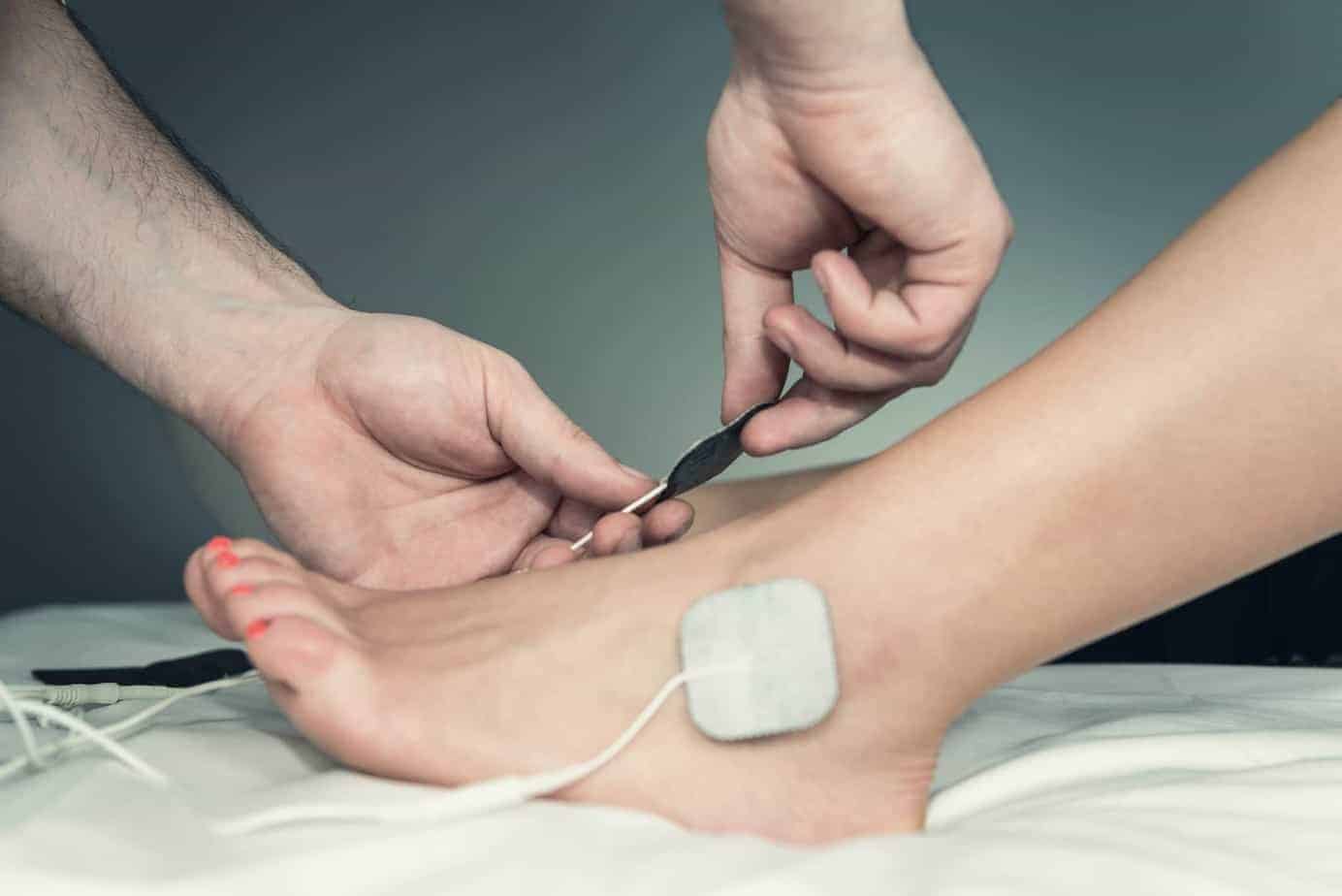What Does Diabetic Foot Pain Feel Like?

Diabetic foot pain affects more than half of those with type 1 or type 2 diabetes. Caused by diabetic peripheral neuropathy, one of diabetes’ most common and severe complications, the pain is chronic, and its intensity varies from mild to very strong.
Neuropathic pain is unique and complex. Diabetic foot pain does not feel the same for everyone, and describing nerve pain is almost impossible. That’s why there’s a great diversity of treatments and pain-management solutions.
Table of Contents
What is diabetic foot pain?
Diabetic foot pain is a chronic pain caused by diabetic peripheral neuropathy (DPN). It affects about half of the people living with diabetes. DPN is so common that the pain it causes in the feet is often referred to as “diabetic foot pain” by physicians and patients.
Diabetic peripheral neuropathy
Diabetic peripheral neuropathy – also called distal symmetric peripheral neuropathy – is a type of nerve damage that primarily affects the extremities of the body (feet and hands). Over time, repetitive high blood glucose levels damage the nervous system and interfere with the transmission of pain signals from the nerves to the brain.
Nerve problems in the feet usually appear after ten years or more of uncontrolled diabetes. Apart from causing diabetic foot pain, peripheral neuropathy can lead to numerous foot problems and severe complications such as diabetic foot ulcers and lower-limb amputations in the worst cases.
Diabetes and foot pain
Foot problems are prevalent and diverse among people with type 1 and 2 diabetes. Most conditions affecting the feet originate from peripheral neuropathy and peripheral artery disease, but other factors might also cause foot pain.
If you have diabetes and suffer chronic foot pain, you must seek your doctor’s advice. The cause may be an easy-to-care foot problem such as fungus or ingrown toenails. But it might also be the symptom of a severe condition such as peripheral neuropathy, diabetic foot ulcer, or gangrene which all require immediate medical attention.
What does diabetic foot pain feel like?
Diabetic foot pain symptoms
- numbness in the feet
- burning sensation
- tingling or prickling
- shooting or stabbing pain
- throbbing and sharp pain
- extreme sensitivity to touch
Other symptoms associated with nerve pain
Besides the above pain symptoms, other motor and muscle movement signs can indicate you have diabetic peripheral neuropathy:
- lack of coordination
- falling
- muscle weakness
- muscle atrophy
- paralysis
- change in skin appearance and color
Neuropathy is a serious condition that can lead to life-threatening complications. If you think you might suffer from it, you must seek your doctor’s advice before taking further steps.
Describing nerve pain
Describing how diabetic foot pain feels is very difficult. Nerve pain is complex and unique because it’s caused by damage to the nerves responsible for sending pain signals to the brain. Besides, the pain’s localization, intensity, and expression may vary during the day.
If you suffer from chronic diabetic foot pain, keeping a pain journal and noting your pain sensations during the day is a good idea. Scale your pain from 1 to 10, note the precise area, describe how it feels, write down the time of the day and what you did when the pain occurred, and take note of any other factor you think might be relevant. It will allow your medical team to make a precise diagnosis and find a more effective pain-relief solution.

Diabetic foot pain treatments
According to current scientific knowledge, diabetic peripheral neuropathy can’t be cured or reversed. Nerves damaged by high blood sugar levels can’t regenerate themselves. However, early diagnosis and treatments considerably help reduce the progression and manage the pain. Take good care of your feet, and don’t forget your yearly diabetic foot exam.
Peripheral neuropathy treatments
Medical treatments for peripheral neuropathy in the feet are numerous and diverse. Oral and prescribed drugs can have strong pain relief effects on this type of pain. If your pain is unbearable, your doctor can prescribe strong painkillers and anti-seizure pills that have proven to work on neuropathic pain. These pharmaceutical treatments can create addiction and have strong undesirable side effects. They’re usually prescribed for the most severe cases of neuropathy. Many alternative pain-relief solutions can also considerably ease nerve pain.
Diabetic foot pain relief cream
Diabetic shoes and socks
Relieving diabetic foot pain is often achieved by wearing appropriate diabetic footwear. Orthopedists and foot experts design diabetic shoes and neuropathy shoes to alleviate foot pain and prevent further neuropathy-induced foot problems. They’re different from regular shoes. The design is looser and non-binding to help promote blood circulation and avoid pressure points. The interior is extra-soft, protective, and seamless. There’s also extra cushioning, padding, and proper orthotics with enhanced foot support and shock absorption. When prescribed by a doctor, diabetic shoes can be covered by Medicare or your health insurance provider.
Diabetic socks are also a great addition. They’re made without any elastic band that constricts your legs and have an entirely seamless interior to prevent frictions and discomforts.
Physical therapy, massages & TENS
Transcutaneous electrical nerve stimulation (TENS) is another pain management therapy that works excellently on diabetic foot pain. It’s one of the newest and most efficient treatments for chronic pains. It sends low-voltage electric pulses through the skin to block the transmission of pain messages to the brain and increase the body’s production of natural painkillers (endorphins and enkephalins). You can book TENS sessions with your medical team or try it at home with one of these TENS units for neuropathy and foot pain.
Home remedies for diabetic nerve pain
Peripheral neuropathy foot pain is so unique and complex that some people don’t respond to the above pain-relief solutions and have found home remedies for diabetic nerve pain. Warm foot baths, evening primrose oil, physical exercise, meditation, biofeedback, and dozens of other things help relieve nerve pain for many people. You might have to try several things out before you find what best relieves your diabetic foot pain.
But remember, neuropathy is severe. Always ask for your doctor’s advice and never take any action without medical supervision. Keeping your HbA1c below 7% is the best way to prevent diabetic foot pain and complications caused by neuropathy.


